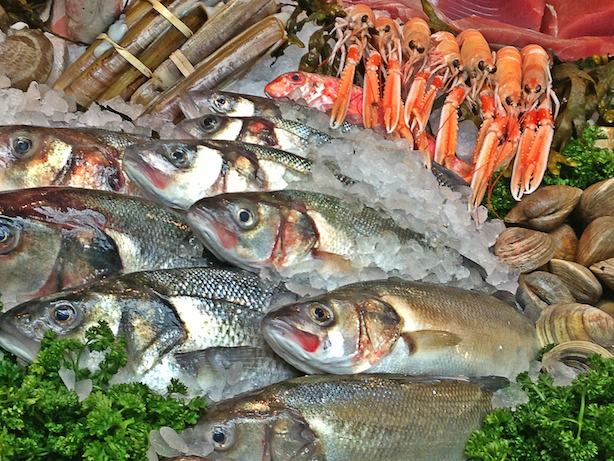
This article was originally posted as an op-ed on Triple Pundit as part of their ongoing Sustainable Seafood channel.
In the last 10 years we’ve seen 25 of the top U.S. retailers make commitments to purchasing sustainable seafood. We’ve seen a lot less traction and follow-through on those commitments. The fact remains that there is not enough responsible fish—whether you define that as Marine Stewardship Council certified, Monterey Bay Aquarium green-listed, or some other eco-label—to satisfy current demand for fish. As a result, many companies are defaulting on their promised timelines, or disguising a lot of questionable fish purchases from farms that are certified or in the process of being certified. As you might guess, the loophole in that bolded phrase is big enough to pilot a commercial trawler through it.
The truth is that leading companies could be doing a lot more to drive supply chains in the right direction other than just committing to buy better fish. Here’s a short list of ways that next generation leaders are engaging:
Invest in supply. There’s not enough responsible fish. So, figure out how to make more. Forward-thinking retailers as well as distributors are putting money into fishery improvement projects, or FIPs, to help local communities and fishers get on the path to making the changes necessary to being environmentally sustainable. Bringing a guaranteed market to even a small fishery can go a long way toward helping these communities develop better governance and practices.
Another way to think about creating sustainable supply would be to support the development of breakthrough sustainable aquaculture. While there are proven methods to raising environmentally sound fish, both on land and in the ocean, those aren’t yet proven business models. Forward thinking companies could invest in initiatives that are targeting the market barriers to thriving and eco-responsible fish farming. Or, they might look at co-investing in a farm to help it scale, as a way to secure dedicated supply. Imagine a network of fish farms in urban centers throughout the U.S., bringing jobs, sustainable and locally sourced fish to communities across the country. Future of Fish is recruiting aquaculture partners to look at funding this initiative of local fish farms across the country.
Buy Local. Truly committed companies have shortened their supply chains and focused on domestic sourcing. Bon Appétit is a great example. Their Fish to Fork program goes beyond a purchase commitment on paper to getting in the trenches to source fish that meets their corporate values. That means buying fish that is low on the trophic scale, meets their definition of “local” (both in the number of miles out to sea and across land that fish travels) and favors small boat operators.
They hired 14 chefs in various regions to serve as “piscators,” or expert buyers empowered to forge sourcing relationships with local fishers. That’s real commitment to deal with the complexity of fish sourcing, not just buying an eco-rating when it’s convenient. Even as the supply chain continues to wrestle with issues of widespread fraud and mislabeling (much of that due to fact that we import more than 90 percent of our fish here in the U.S.) some domestic fisheries producing responsibly harvested fish are collapsing economically. If more companies stepped up like Bon Appétit, we might prevent that.
Pool Purchasing Power. One of the most promising developments in the last few years has been a business-level community supported fishery. Dock to Dish, led by Sean Barrett in New York, has organized purchasing cooperatives of restaurants that borrow from the thriving models for individual consumers to purchase shares in fisheries or local produce. By pooling resources, the businesses can get access to steady amounts of fish, and know their fishmonger personally. There’s no reason why other businesses can’t follow suit with a similar model.
Invest in Traceability. Instead of passing the buck to distributors, companies need to take a leadership role in supply chain technology — not just to verify the sustainability of fish, but also ensure that it wasn’t harvested illegally or using slave labor. Today, the description of “slave-free” fish isn’t a claim that any retailer steps up to make. The technology exists to make that claim possible, if the will exists to implement it. Future of Fish is recruiting companies interested in a pilot project to make that idea a reality.
The bad news for companies is that we’re out of the “low hanging fruit” solutions that are easy to implement. The good news is that a few corporate leaders with a bit of commitment and smart investment could chart a path of innovation across fisheries that would leave competitors in their wake.
Published Jul 01, 2014




